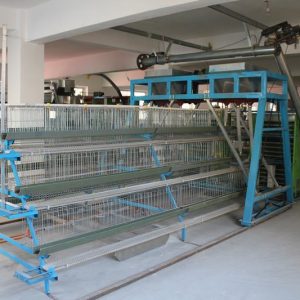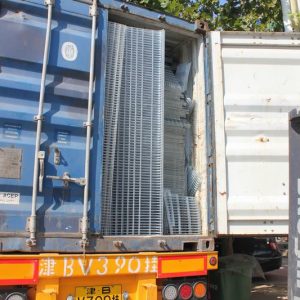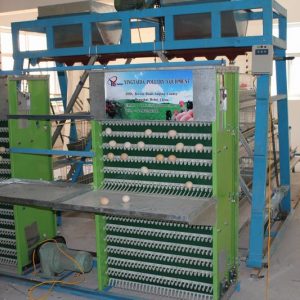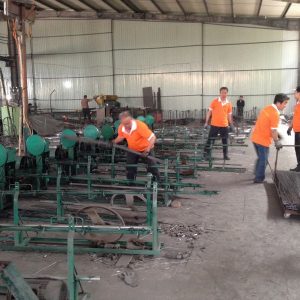
How to extend the peak laying period of laying hens?
How long is the peak egg laying period? The laying rate and laying cycle of laying hens are important factors that affect the profitability of laying hens. So how to extend the peak laying period of laying hens?
How long is the peak egg laying period?
Laying hens begin to lay eggs in about 120 days. The peak egg laying period is 1 to 2 months after laying. If the chicken’s physique is good during the egg laying period, there is no disease. The peak period can be maintained from March to April.
It is usually eliminated after 16 months or so depending on the amount of eggs produced. Under normal circumstances, eggs are laid from about 110 days to 120 days of age, until they are eliminated at about 550 days of age, that is, eggs that can be laid for about 440 days. If the age exceeds 550 days, in addition to the low egg production rate, the quality of the eggshell is not good, and the eggs are not easy to sell.
How to extend the peak laying period of laying hens?
1. Choose excellent breeds of layers
After long-term rearing and breeding, the egg production performance of laying hen breeds has reached a fairly high level, and some breeds also have the advantages of small size, low feed intake, early maturity, high yield, low dead panning rate, etc Stable genetic performance. Therefore, the selection of excellent breeds in the process of laying hens combined with scientific and standardized feeding management can prolong the peak production period of laying hens and obtain higher egg production.
2. Scientific feeding management
Feeding management is an important task to prolong the laying period of laying hens, formulate a scientific and reasonable feeding plan, determine a reasonable feeding method, and carry out standardized management. The excellent breed characteristics of the layer hens can be fully exerted. The house should be cleaned and disinfected before rearing, and the chickens can only be reared after being vacant for at least 1 week. The flocks are grouped and fed according to different ages, weights, etc., which is convenient for management and epidemic prevention, can enable laying hens to start production at the same time, and is beneficial for maintaining a longer peak production period. The feeding method is mainly free-feeding. When feeding, feed less and add more. According to the nutritional requirements of different varieties and different growth stages, suitable diets are provided. Weigh regularly during the feeding process, and if the weight of the layer is not up to the standard, if the weight is too low, the nutritional concentration of the diet can be appropriately increased and the feeding amount is increased. Controlling body weight and improving the evenness of the flock have an important influence on the performance of laying hens and the duration of the peak laying period.
Do a good job in environmental management. First, we must control the temperature in the house, and we must also take into account the work of ventilation. Ventilation is more important than temperature control to a certain extent, which has a greater impact on the growth and development of chickens. In addition, good ventilation can not only keep the air in the house fresh, but also control the relative humidity in the house. Reasonable light management can prolong the peak egg laying period. In order to increase the egg production of laying hens and maintain the peak egg laying period for a longer period of time, strict light management must be carried out at all stages of laying hens. In general, laying hens need 24 hours of light in the first 2 days during the brooding period, and then gradually reduce the light time until they are adapted to the local natural light at 18-19 weeks of age. Natural light can be used completely during the brooding period. Appropriate light can effectively coordinate the body maturity and sexual maturity of laying hens, and it is also a necessary factor for laying eggs in laying hens. Reasonable lighting can prolong the peak egg laying period, thereby increasing egg production.
3. Provide scientific and reasonable diet
Laying hens have a higher nutrient concentration in the diet during the laying period. To maintain the peak production period for a longer period of time, it is necessary to pay attention to the supply of nutrients. Energy is an important nutrient factor for the production level of the laying hens. , So pay attention to the importance of energy. All aspects of laying hen farming are connected, therefore, the nutrition of each growth stage has an important influence on the peak egg laying period and egg production in the later stage of laying hens. Among them, the growth and development of the chicks is rapid. It is necessary to provide high-energy and high-protein diets. At the same time, pay attention to the balance between the two, and the supply of other nutrients cannot be ignored. In the egg period, in order to meet the demand for egg production, in addition to paying attention to the energy and protein requirements, it is also necessary to increase the calcium level in the diet.
4. Strengthen the management of laying hens at all stages
Strengthen the management of laying hens at all stages. The purpose of the work in the brooding stage is to breed high-quality chicks. It is necessary to do a good job in the management of environmental temperature, humidity and light, and improve the success rate of brooding. It is very important to increase the evenness of the flock after the laying hen enters the breeding period. In order to achieve the standard weight and the peak production of the chicken with a high degree of uniformity rises appropriately, the peak production period is maintained for a long time and the overall growth level is high Therefore, regular weighing should be carried out. For those who do not meet the standard, the feeding amount and feeding method should be adjusted in time.
After the laying hen enters the pre-delivery period, it is necessary to make preparations before laying eggs, and can be transferred to the cage in advance so that the laying hens can adapt to the environment as soon as possible. Adjust the nutritional depth of the diet of laying hens. The calcium content in the diet should be increased to 2%-2. 2%. At the same time, pay attention to maintaining a higher nutritional level of the diet, so that the laying hens have sufficient nutrients in the body to prepare for production Egg required. During the pre-birth period, light can be increased appropriately to stimulate laying hens, maintain a good feeding environment, and reduce the occurrence of stress.
During the rising period of laying hens, the intake of laying hens will continue to increase due to weight gain, immunization, and accelerated ovulation. If the intake is insufficient, the nutritional requirements cannot be met. The laying hens at this stage can be provided with a high nutrient concentration diet to reduce the nutrient loss of the chicken body. At the same time, according to the lighting plan, gradually increase the lighting time to 16-17 h, and create a quiet and comfortable environment to make the peak of egg production rise rapidly. After the laying hen enters the peak production period, it is necessary to minimize the occurrence of stress, coordinate the relationship between various factors, maintain a constant light time, provide suitable nutrition, and carry out scientific feeding and management to maintain a longer period of egg production. During the peak period, a higher egg production is obtained.
5. Formulate a scientific and reasonable health and epidemic prevention system
Disease factors will make the laying peak period of laying hens last for a short period of time, and even lead to no laying peaks of laying hens. Therefore, it is necessary to strengthen the prevention of chicken diseases and formulate a scientific and reasonable health and epidemic prevention system. It is necessary to strengthen the sanitation cleaning and disinfection work in the chicken house, and provide safe feed and drinking water for the chickens. In addition, the most important thing is to set the degree of immunization according to the situation in the region and the field, and to strictly follow the degree of operation to avoid the occurrence of epidemics.



